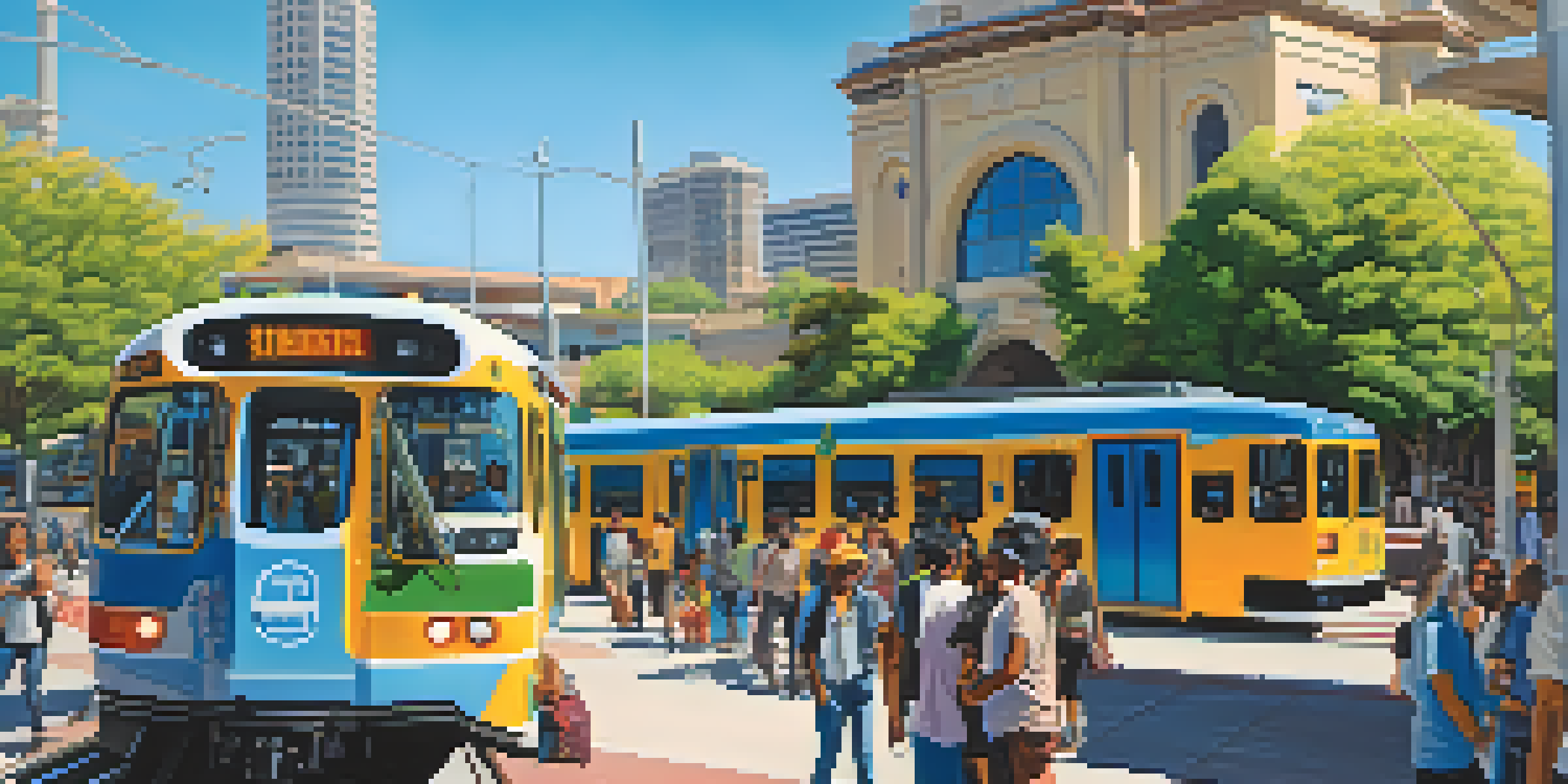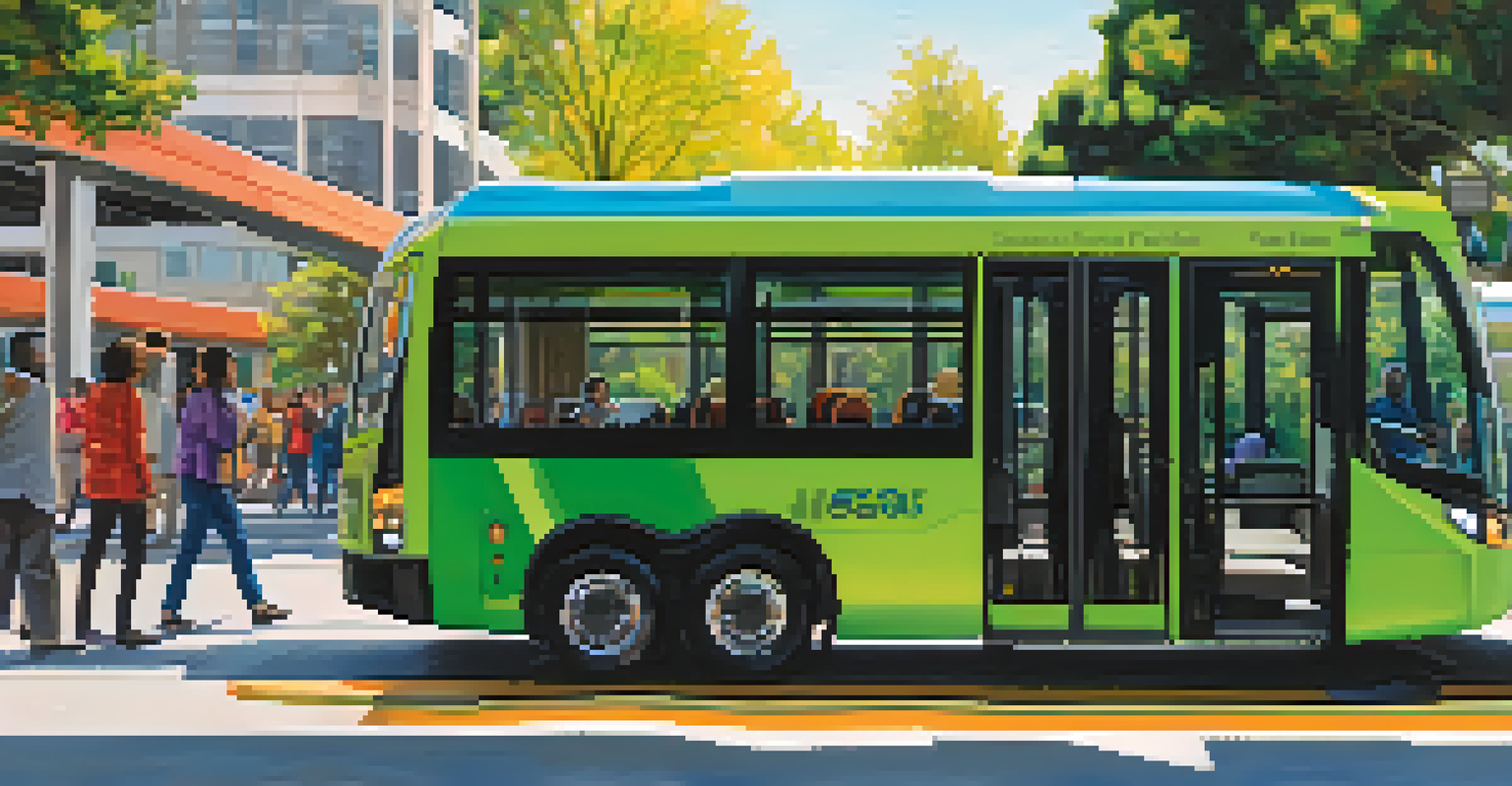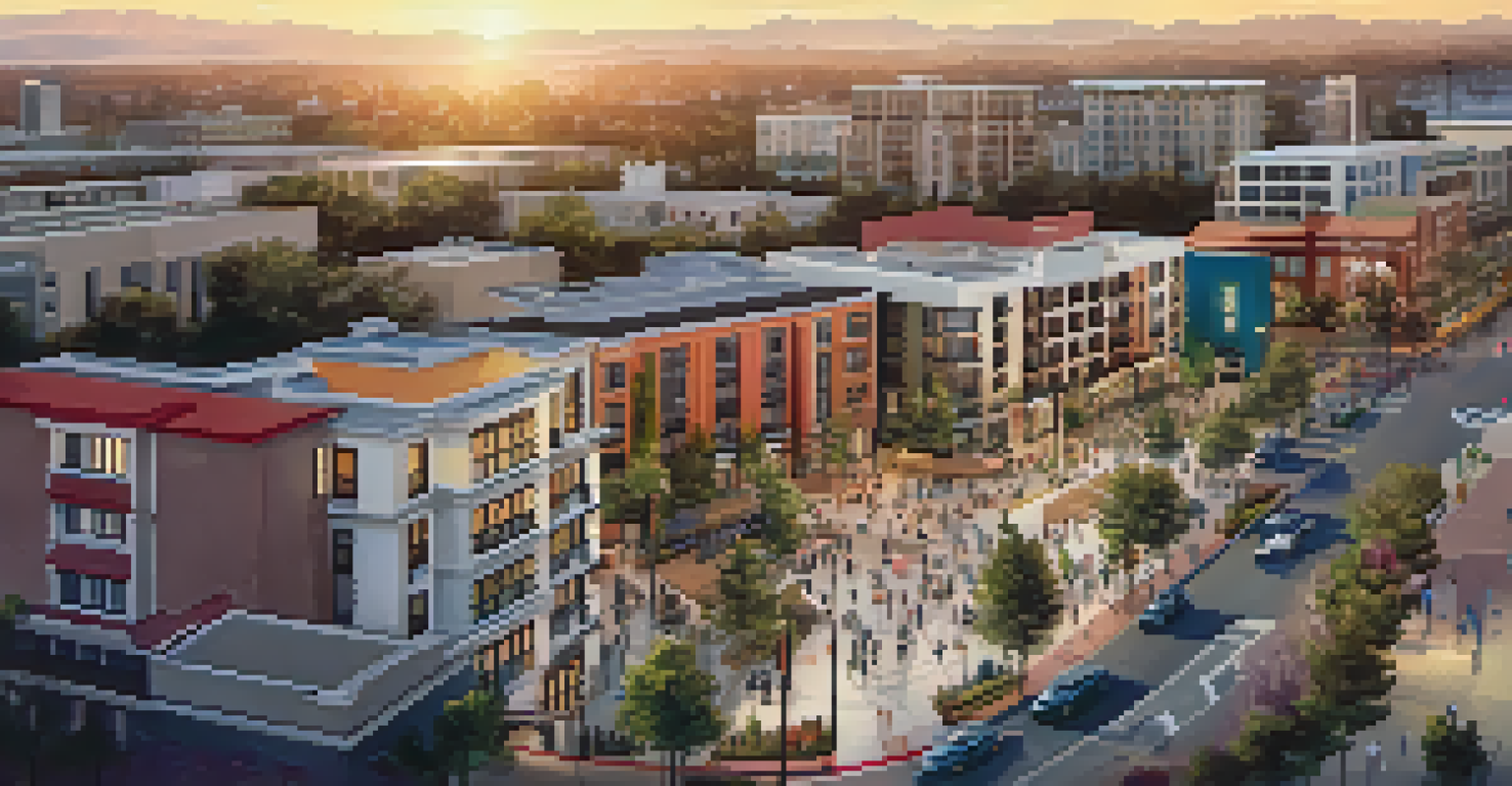The Role of Public Transportation in San Jose Real Estate Growth

Public Transportation: A Lifeline for San Jose Residents
Public transportation serves as a vital resource for San Jose residents, providing them with access to jobs, education, and entertainment. It connects neighborhoods, making it easier for people to commute without relying solely on cars. This accessibility is particularly important in a sprawling city like San Jose, where traffic congestion can make travel challenging.
Public transportation is a lifeline for urban residents, providing access to opportunities and enhancing the quality of life.
The presence of public transportation can significantly influence where people choose to live. Many individuals and families prioritize easy access to transit when selecting their homes, often leading them to areas with robust public transport options. This trend not only promotes a sense of community but also enhances the overall quality of life.
As more residents embrace public transit, demand for housing near these transit hubs increases. This often results in rising property values in areas well-served by buses and trains, showcasing the direct correlation between public transportation and real estate growth.
Transit-Oriented Development: A Smart Growth Strategy
Transit-oriented development (TOD) is a planning strategy that focuses on creating dense, walkable communities around public transportation hubs. By incorporating residential, commercial, and recreational spaces nearby, TOD fosters a lifestyle that reduces reliance on cars. This approach not only helps mitigate traffic congestion but also encourages sustainable living practices.

San Jose has embraced TOD in various neighborhoods, aiming to create vibrant communities that cater to diverse populations. The development of high-rise apartments and mixed-use buildings around light rail stations exemplifies how public transportation can shape urban landscapes. As a result, these areas become more attractive to both residents and businesses.
Public Transit Boosts Real Estate
Accessible public transportation increases property values as more residents seek homes near transit hubs.
The benefits of TOD extend beyond convenience; they also enhance property values. As neighborhoods evolve into thriving hubs of activity, the demand for housing in these areas surges, driving up real estate prices and stimulating local economies.
Economic Growth Linked to Public Transit Accessibility
Public transportation not only facilitates individual commuting but also plays a significant role in economic growth. By connecting workers to job centers, it enables businesses to access a larger talent pool. This enhanced connectivity can lead to increased productivity and innovation, driving the local economy forward.
A city’s public transit system is its economic backbone, linking workers to jobs and businesses to talent.
In San Jose, the presence of reliable public transit options has attracted numerous companies, particularly in the tech sector. The ease of commuting has become a selling point for businesses looking to establish themselves in the area. Consequently, this influx of companies contributes to a robust job market, further fueling the demand for housing.
As the economy flourishes, so does the real estate market. The growing workforce needs places to live, driving up property values and stimulating new developments. This cycle demonstrates how public transportation serves as a catalyst for economic and real estate growth.
Sustainability and Public Transportation in San Jose
Sustainability is a growing concern in urban planning, and public transportation plays a pivotal role in promoting eco-friendly practices. By encouraging the use of buses and trains over personal vehicles, cities can reduce greenhouse gas emissions and improve air quality. This shift not only benefits the environment but also enhances the overall health of communities.
San Jose’s commitment to sustainable transit solutions, such as electric buses and bike-sharing programs, showcases its dedication to reducing the carbon footprint. These initiatives help create a more livable city, making it an attractive option for environmentally conscious homebuyers. As sustainability becomes a priority, neighborhoods with accessible public transport are likely to see increased demand.
Sustainable Development Strategies
Transit-oriented development promotes walkable communities that reduce car reliance and enhance quality of life.
The intersection of public transportation and sustainability can also lead to innovative real estate developments. Builders are increasingly focusing on eco-friendly designs near transit hubs, appealing to a market that values green living. This trend further reinforces the connection between public transportation and real estate growth.
Challenges Facing Public Transportation in San Jose
While public transportation offers numerous benefits, it also faces challenges that can impact its effectiveness. Issues such as underfunding, maintenance problems, and service reliability can deter potential users. Addressing these challenges is crucial to ensuring that public transit remains a viable option for San Jose residents.
For instance, if bus routes are infrequent or trains experience delays, commuters may opt for their cars, leading to increased traffic congestion. This shift diminishes the positive impact public transportation can have on real estate growth. Therefore, investing in infrastructure and improving service quality is essential for maximizing the potential of public transit.
Moreover, community engagement is vital for understanding the needs and preferences of residents. By actively involving the public in transportation planning, San Jose can create a more efficient and user-friendly system. This collaboration not only enhances transit options but also fosters a stronger community connection.
The Future of Public Transportation and Real Estate
As San Jose continues to grow, the future of public transportation will play a critical role in shaping the city’s real estate landscape. With ongoing investments in transit infrastructure, such as expansions to light rail and bus rapid transit, the potential for growth in surrounding neighborhoods is significant. These developments can open up new areas for residential and commercial investment.
Moreover, the rise of technology-driven solutions, like ride-sharing and smart transit apps, is changing how people interact with public transportation. These innovations can enhance the overall user experience, making it easier for residents to opt for transit over personal vehicles. As public transit becomes more accessible and efficient, we can expect a shift in where people choose to live and work.
Economic Growth Tied to Transit
Reliable public transit connects workers to jobs, stimulating the local economy and driving housing demand.
In this evolving landscape, real estate developers must adapt and focus on creating properties that cater to the changing needs of residents. By prioritizing locations near transit hubs and incorporating sustainable practices, they can align with the future of public transportation and real estate growth in San Jose.
Conclusion: The Symbiotic Relationship of Transit and Real Estate
In summary, public transportation and real estate growth in San Jose are intricately linked. As the city invests in expanding and improving its transit system, neighborhoods with easy access to these services will likely see an uptick in property values and new developments. This symbiotic relationship underscores the importance of public transit in shaping urban landscapes.
Moreover, as residents increasingly seek sustainable living options and convenient commuting solutions, public transportation will continue to be a driving force in the real estate market. Developers and city planners must recognize this trend and work collaboratively to create vibrant, accessible communities.

Ultimately, the future of San Jose’s real estate market hinges on the success of its public transportation system. By prioritizing transit-oriented development and sustainable practices, the city can not only enhance its real estate growth but also improve the quality of life for all its residents.